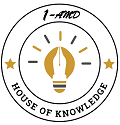Enterprise Architecture Design For Creative Project Management Systems Kuy Studio Uses The Zachman Framework
Keywords:
Enterprise Architecture, Zachman Framework, Project Management System, Kuy StudioAbstract
Kuy Studio as a creative company faces challenges in managing complex and collaborative projects. The absence of a structured information system leads to suboptimal workflows, coordination, and supervision of projects. This research aims to design an enterprise architecture using the Zachman Framework to support a creative project management system that suits the needs of the organization. This approach accommodates all aspects of the organization from a business standpoint to technical implementation. The results of this research are in the form of an enterprise architecture blueprint that maps business processes, information, and IT infrastructure in an integrated manner. This design is expected to be the foundation for the development of effective and efficient systems in the future.
References
1. Andry, J. F., Liliana, L., & Chakir, A. (2021). Enterprise architecture landscape using zachman framework and ward peppard analysis for electrical equipment export import company. Trends in Sciences, 18(19), 23-23.
2. Anthony Jnr, B. (2021). Managing digital transformation of smart cities through enterprise architecture–a review and research agenda. Enterprise Information Systems, 15(3), 299-331.
3. Anonymous, Project Management Institute. (2017). A guide to the project management body of knowledge (PMBOK® Guide) (6th ed.). PMI.
4. Badii, A., & Sharif, A. (2003). Information management and knowledge integration for enterprise innovation. Logistics Information Management, 16(2), 145-155.
5. Bondar, S., Hsu, J. C., Pfouga, A., & Stjepandić, J. (2017). Agile digital transformation of System-of-Systems architecture models using Zachman framework. Journal of Industrial Information Integration, 7, 33-43.
6. Danny, J., Wang, G., & Alianto, H. (2018, September). The application of Zachman framework in improving better decision making. In 2018 Indonesian Association for Pattern Recognition International Conference (INAPR) (pp. 245-249). IEEE.
7. Fawazzie, M. H. H., Pradana, F. P., & Pakaja, F. (2025). Applying TOGAF ADM for Developing an IT-Based Hedge Fund. (2025). International Journal of Information Systems and Technology, 1(03), 135–146. https://oneamd.com/JOL/index.php/IJOINT/article/view/42.
8. Gaie, C., Florat, B., & Morvan, S. (2025). An architecture as a code framework to manage documentation of IT projects. Applied Computing and Informatics, 21(1/2), 24-36.
9. Haminah, S., & Pakaja, F. (2024). Evaluation of Shopee Food Usability Using Usability Testing Methods and System Usability Scale. International Journal of Information Systems and Technology, 1(01), 16-25.
10. Ilin, I. V., Levina, A. I., Dubgorn, A. S., & Abran, A. (2021). Investment models for enterprise architecture (EA) and IT architecture projects within the Open Innovation Concept. Journal of Open Innovation: Technology, Market, and Complexity, 7(1), 69.
11. Ismail, S. M. A., & Salama, G. E. (2025). Components and Architecture of Project Management Information Systems: Exploring PMIS Dynamics. In Project Management Information Systems: Empowering Decision Making and Execution (pp. 49-98). IGI Global Scientific Publishing.
12. Kotusev, S., & Kurnia, S. (2021). The theoretical basis of enterprise architecture: A critical review and taxonomy of relevant theories. Journal of Information Technology, 36(3), 275-315.
13. Maulana, Y. M., Azmi, Z. R. M., & Phon, D. N. E. (2023). Business-IT Alignment through Enterprise Architecture in a Strategic Alignment Dimension: A Review. Register: Jurnal Ilmiah Teknologi Sistem Informasi, 9(1), 55-67.
14. Ningtyas, S. S., Alif, D. N., & Pakaja, F. (2025). Inventory System Design at Rajawali Motor Workshop Using Zachman Framework. International Journal of Information Systems and Technology, 1(03), 147-164. https://oneamd.com/JOL/index.php/IJOINT/article/view/44.
15. Rezgui, Y., Hopfe, C. J., & Vorakulpipat, C. (2010). Generations of knowledge management in the architecture, engineering and construction industry: An evolutionary perspective. Advanced Engineering Informatics, 24(2), 219-228.
16. Ross, J.W., Weill, P., & Robertson, D.C. (2006). Enterprise Architecture as Strategy. Harvard Business School Press.
17. Saha, P. (2009). Handbook of enterprise systems architecture in practice. IGI Global.
18. Spewak, S.H. (1992). Enterprise Architecture Planning: Developing a Blueprint for Data, Applications and Technology. Wiley.
19. Vissers, G., & Dankbaar, B. (2002). Creativity in multidisciplinary new product development teams. Creativity and innovation management, 11(1), 31-42.
20. Yin, R. K. (2014). Case study research: Design and methods (5th ed.). Sage Publications.
21. Zachman, J. A. (2003). The zachman framework for enterprise architecture. Primer for Enterprise Engineering and Manufacturing.[si]: Zachman International.
22. Zachman, J.A. (1987). "A Framework for Information Systems Architecture." IBM Systems Journal, 26(3), 276–292.

Downloads
Published
Issue
Section
License
Copyright (c) 2025 International Journal of Information Systems and Technology

This work is licensed under a Creative Commons Attribution-NonCommercial-ShareAlike 4.0 International License.



